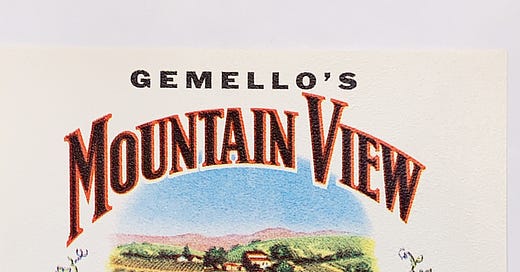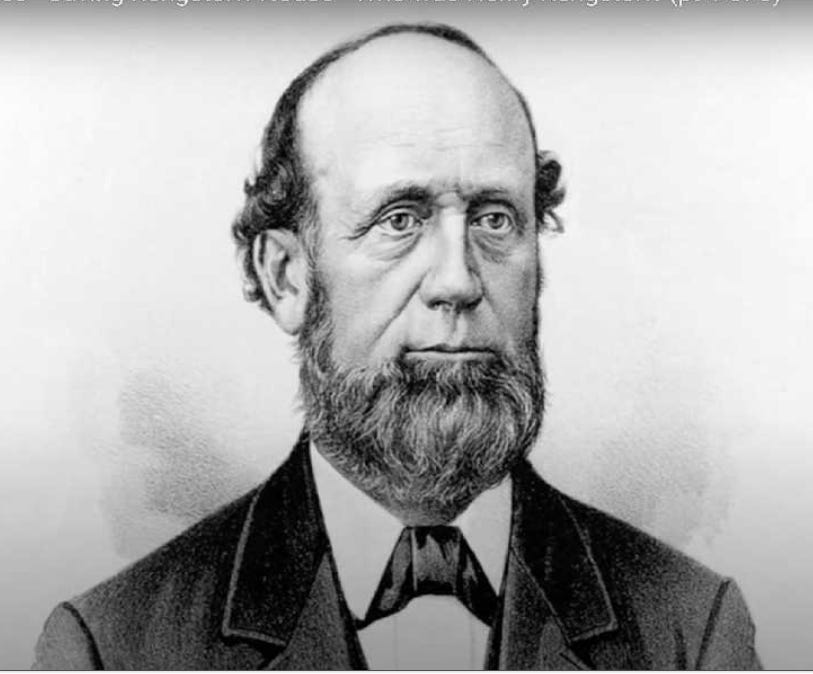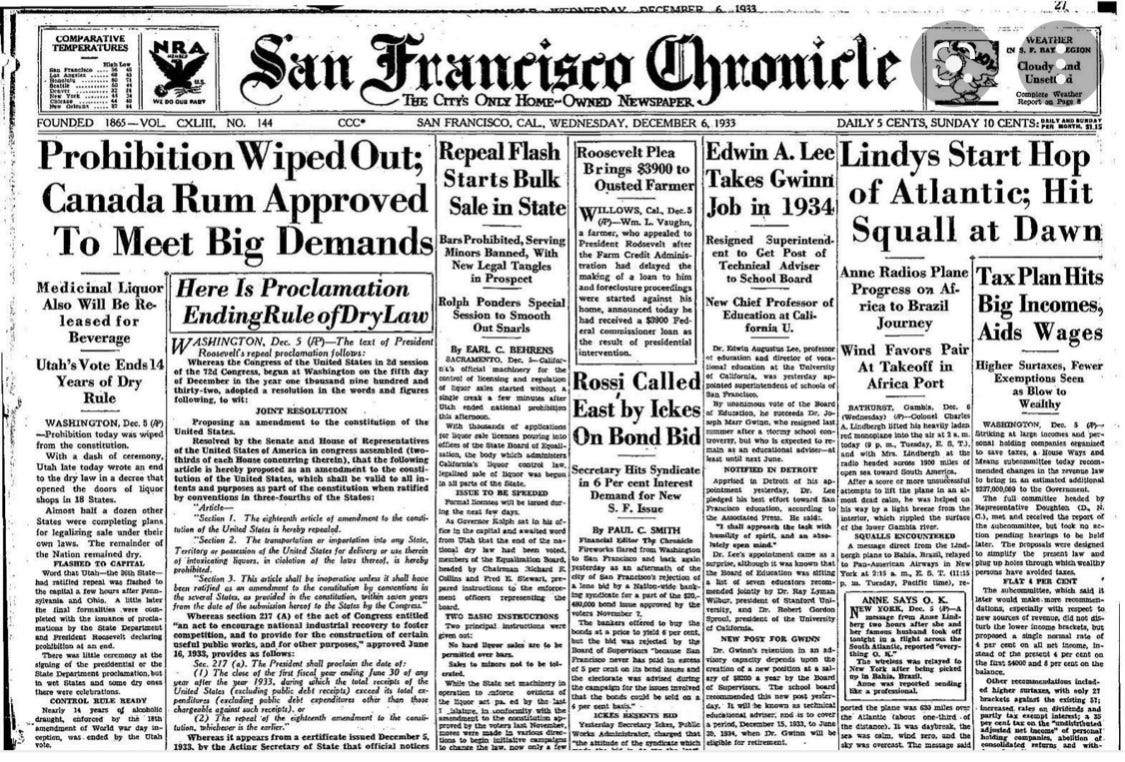The Birth of Mountain View
Great Grandpa John Gemello buys a ranch from the heirs of Henry Rengstorff. The ranch would eventually become home to the Gemello Winery.
👋 Hello, I’m Kevin Ferguson and welcome to 🍷 Rain on the Monte Bello Ridge,🍷 a memoir about health, aging and winemaking. (Book summary) 🍇 This is my newsletter. It includes book research and early release chapters about winemaker Mario Gemello and his centenarian widow, Kay Gemello. 📖 They are my lovable maternal grandparents. You can subscribe by clicking on this handy little button.
Below is a middle chapter. Hope you enjoy it!
The Birth of Mountain View
Long before Mountain View became home to 81,000 residents and a sprawling Google headquarters of roughly 23,000 cubicle dwellers, pre-pandemic, the territory was a tiny stagecoach stop between San Jose and San Francisco.
One of the first residents in the 1850s was Henry Rengstorff, a German immigrant, lured to America by the California gold rush. However, his fortune got delayed. He arrived too late to enjoy the riches in San Francisco. He eventually settled as a farm laborer in the Santa Clara Valley, saving enough money to purchase squatter's rights to 290 acres of land in San Jose.
In 1864, Rengstorff extended his real estate holdings, acquiring the 164 acres of land, which is now part of Shoreline Business Park in Mountain View, east of Highway 101. He constructed a ship landing, and called it Rengstorff Landing. It would play a significant role in the economic development of Mountain View and the surrounding area. Local farmers exported their fruits and grains to San Francisco, while returning ships brought building supplies for the growing region.
Henry Rengstorff (credit: "Friends of R House")By 1880, only 250 people lived in what would become Mountain View. Forty years later, the population would increase 10-fold to nearly 2,000.1
In 1924, Great Grandpa John Gemello purchased a 23-acre farm of prunes and grapes in Campbell, which prompted a friend of his to suggest he could have done better.
“You could have acquired a farm much closer to home,” said Lewis Forstell, a well-connected lawyer, who resided in Los Altos. He frequently bought vegetables from Gemello.
A ranch was for sale, by Louis and Arthur Martel, the grandchildren of Henry Rengstorff. The Martels ran a catering business in San Francisco, where Forstell had his law practice. Gemello investigated the tip and was intrigued. So intrigued, in fact, he recognized the 31-acre site west of El Camino as the perfect location for his grand plans: his own vineyard and winery, something more successful than what he was able to do in his native Italy.
The following year, he made a trifecta of deals to make it happen: selling his one-half interest in the Campbell farm, his one-third interest in his Mountain View truck farm and borrowed some money from Forstell. He then bought his own farm in the Santa Clara Valley.
The price for this 31-acre plot in Mountain View in 1925: $30,000.2
The farm consisted of prunes, apricots, and some bare land, which Gemello planted cherries and zinfandel grapes. Within a few months, he had money coming in from his two fruit crops, helping him get a good start on his own farm. The best part: the family now had its own house, with a bathroom, electricity and heating. Within a few years, Gemello added a new kitchen with a gas stove, laundry room and a second bathroom.
“Right now, we were flying high,” recalled my grandfather Mario, writing in his journal many years later.
“Right now, we were flying high,” recalled my grandfather Mario, writing in his journal many years later.
These good times only lasted a few years. That’s because the 1929 Market Crash, fueled by easy credit and inflated real estate values, plunged the country into the Great Depression, which hit farms hard. Not only that, but a harsh winter freeze wiped out the 1930 Gemello fruit crop.
Great Grandma Teresa stared at her husband: “Now what are we going to do?"
“Let's go to Italy and see our relatives,” her husband suggested.
“Are you kidding?” She was dumbfounded. "I have no family there, and I don't want to see my in-laws. You go and see your mother and sisters."
Great Grandpa scraped up enough money to fly to Italy. On his return, the farm had generated no income. The trees were so badly damaged from the freeze, and next year's crop was unpromising.
So Gemello went to visit his banker, Wilbur Camp, at the Bank of Italy, on Castro and Villa streets in downtown Mountain View. He had a rapport with him. After all, the bank’s founder A.P. Giannini, began his business selling fruits and vegetables from a horse-drawn wagon, before establishing the first bank branch in 1904 in San Francisco’s Italian neighborhood of North Beach.3
Giannini would knock on doors and corner people on the street, persuading "unbanked" immigrants that gold and silver coins were safer in interest-earning vaults than under mattresses.4
That was a promise difficult to keep, but luckily not impossible. On the morning of April 18, 1906, a 7.9 magnitude earthquake rocked San Francisco. The shockwaves toppled brick buildings and Victorian structures. Firestorms engulfed the city. Broken water mains impeded firefighting efforts. As flames approached Bank of Italy’s one-room building, Giannini loaded $80,000 in coins, gold bars and bank records onto fruit crates and topped them with oranges to avoid attention.5 Hopping in his horse-drawn wagon, Giannini steered past gangs of thugs and looters in the streets, thirty miles down the peninsula, to his home in San Mateo.6
April 22, 1906
Escaping an almost certain doom, Giannini emerged resilient. Three years later, the Bank of Italy purchased the Commercial and Savings bank in San Jose, Giannini’s native town. The idea of serving Italian immigrants was rooted in A.P.’s upbringing. His father, Luigi, had operated a 22-room hotel catering to Italian immigrants, while A.P. was a child.7 After converting the Commercial and Savings bank into a Bank of Italy branch,8 A.P. ensured Italians, like my great grandfather, felt welcome, posting business hours both in English and Italian. He encouraged Italian farmers to seek loans for necessary equipment, like tractors. Giannini recognized the opportunity to make money by lending to the little guy, many of whom were Italian immigrants looking for opportunities that were not available back in Italy.9
When Great Grandpa Gemello returned from his visit to Italy later in 1930 to get a bank loan, Bank of Italy was on the verge of being rebranded as Bank of America.
He needed to borrow enough money to live on and buy a new tractor. This was a new Cletrac, with tracks instead of wheels, which the old Fords had. It was easy to start and drive, so his teenage son, Mario, my grandfather, could learn to operate it. Great Grandpa would do most of the tractor work at home, operating it in the early mornings and renting it out, in the evenings, for extra cash. They used the tractor so much that they wore it out within five years.
Depression-Era Creative Endeavors
Within a few years, the trees produced a crop again, and John Gemello recovered from the hard times during the early years of the Depression. Around this time in 1932, he had an opportunity to rent 24 acres next to his farm from the Martel brothers, Louis and Arther, who sold him his farm.
So now Great Grandpa was farming 55 acres of fruit, vegetables, and berries. This included a small four-room house, built on the ranch, for a Spanish family, the Morinos, who would farm part of the rented land in vegetables on a share basis. The Morinos did all the labor, and Gemello provided the land, water, and fertilizer. They had a fifty-fifty partnership. The cost to build the house was $750, complete and ready to move in.
Also on the ranch property were two old, unlivable homes, one on the rented land and one on Gemello’s ranch. Two Japanese families, the Nabanos, and the Magawas, agreed to fix up the homes, so they could live in them. For this, they agreed to grow berries on the other part of the rented land. Their share basis was sixty-forty, more for them because of the work involved in raising berries.
With all this produce being raised, Great Grandpa Gemello had to find a way to sell it, so he returned to the peddling business again, but this time, wholesale, only to stores and markets. Any surplus would be shipped to the San Francisco open market. Every night, a truck would pick it up and have it at the market by early morning.
That year, 1932, was a busy one for Gemello, as rumblings of a repeal of Prohibition was growing as the country sunk deeper into the Depression. Great Grandpa Gemello was drawing up plans for a Mountain View winery and submitting business permits.
On March 4, 1933, President Franklin Roosevelt delivered his first inaugural address in the bleakest days of the Great Depression. In announcing his goals of his First 100 Days, he asked Congress to take the first step towards ending Prohibition. Eighteen days later, Roosevelt signed the Beer and Wine Revenue Act, a law that levied a federal tax on all alcoholic beverages to raise revenue for the federal government and gave individual states the option to further regulate the sale and distribution of beer and wine.
In December, Congress passed the 21st Amendment, ending national Prohibition.
John Gemello with the help of his teenage son, Mario, kicked off the New Year opening for business. The sign for Gemello Winery went up at 2003 El Camino Real in Mountain View.
Do you like this newsletter?
Then you should subscribe here:
Source: US Census
The value of the purchase in 2022 dollars would be about $501,345. Source: CPI calculator
Office of the Comptroller of the Currency, Title: “Bank of America: The humble beginnings of a large bank”
Office of the Comptroller of the Currency, Title: Bank of America: “The humble beginnings of a large bank”
Office of the Comptroller of the Currency, Title: “Bank of America: The humble beginnings of a large bank”
Frederick Marrazzo, Italians in the Santa Clara Valley, (San Francisco, Arcadia Publishing, 2007) Pg 25
Marrazzo, Italians in the Santa Clara Valley, Pg. 11
Marrazzo, Italians in the Santa Clara Valley, Pg 30








At one point in time, I worked in the general area of the winery - on Distel Circle in Mountain View. So, it is so much fun to read the history of places I have known for years.
Thanks for sharing Janice. It's always nice to hear about people's connection with the story or area!